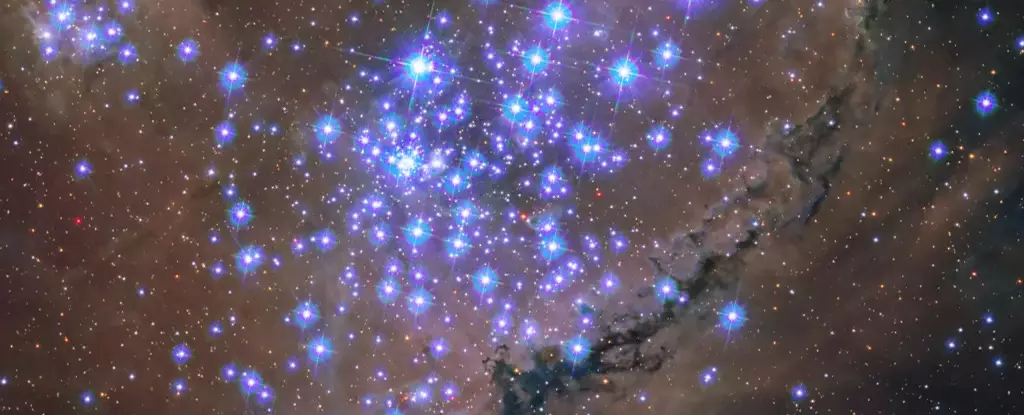Located roughly 210,000 light-years away from Earth, the Small Magellanic Cloud (SMC) is a dwarf galaxy that plays a significant role in our understanding of star formation and galaxy evolution. With a diameter of about 18,900 light-years and containing approximately 3 billion stars, the SMC orbits the Milky Way alongside its counterpart, the Large Magellanic Cloud (LMC). Scientists are fascinated by these satellite galaxies because they offer insights into how galaxies evolve through mergers, a process that the Milky Way is likely to undergo with these two galaxies in the future.
One of the most captivating features of the SMC is the star cluster NGC 346, situated near the center of the hydrogen-rich nebula N66. Recently, NASA released a stunning image of this star cluster captured by the Hubble Space Telescope. Thanks to Hubble’s sharp resolution and ability to make sensitive ultraviolet observations, scientists were able to unveil the intricate details of this dynamic star-forming cluster. The interaction between numerous hot, young, blue stars and the surrounding dust and gas creates a mesmerizing spectacle that sheds light on the process of star formation.
The images obtained by Hubble provide valuable insights into star formation and the shaping of the interstellar medium (ISM) in low-metallicity galaxies like the SMC. These conditions are believed to resemble those of the early Universe when heavy elements were scarce. It was only after the emergence of the first generation of stars and galaxies, known as Population III, approximately 100 million to one billion years after the Big Bang, that heavier elements began to form. The distribution of these elements throughout space occurred when these stars reached the end of their lifecycle and went supernova. By studying galaxies like the SMC, scientists can gain a deeper understanding of the processes that have shaped the cosmos since its inception.
After more than three decades of operation, the Hubble Space Telescope continues to play a crucial role in unravelling the mysteries of the Universe. By combining ultraviolet and visible light data from its Advanced Camera for Surveys (ACS) and Wide Field Camera 3 (WFC3), Hubble provides unprecedented views of celestial phenomena such as NGC 346 in the SMC. The telescope’s remarkable longevity serves as a testament to human ingenuity and the insatiable curiosity that drives us to explore the cosmos and seek answers to the most profound questions about our existence.


Leave a Reply